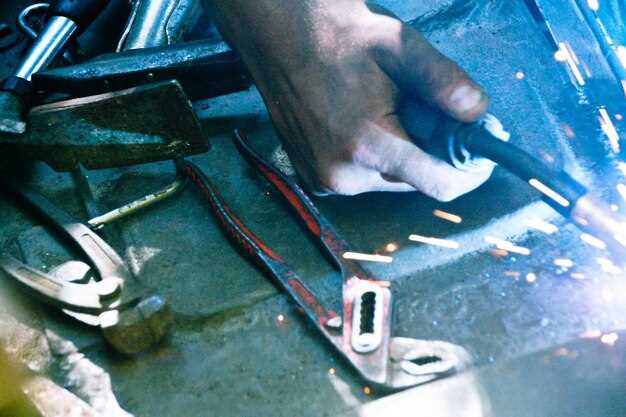
When it comes to maintaining the longevity and performance of your Ford vehicle, rust protection should be at the forefront of your care routine. Rust can cause significant damage to not only the exterior of your vehicle but also its structural integrity. Understanding how to effectively protect your Ford from rust is essential for preserving its value and ensuring safety on the road.
Rust is the result of corrosion due to moisture, dirt, and salt, which can accumulate in various areas of your vehicle. Factors such as climate, driving conditions, and even the materials used in manufacturing can influence how susceptible your car is to rust. Therefore, adopting proactive protection strategies is crucial, especially if you live in areas prone to harsh weather conditions or road salt.
In this article, we will delve into practical and actionable tips specifically designed to help you safeguard your Ford from rust. From regular inspections to applying protective coatings, these expert recommendations will empower you to take charge of your vehicle’s maintenance and ensure its durability for years to come.
Assessing Rust Vulnerabilities in Ford Bodywork

Proper assessment of rust vulnerabilities in Ford bodywork is essential for ensuring the longevity and safety of your vehicle. Start by inspecting common areas where rust typically occurs, such as wheel wells, undercarriage, and the seams of doors and hoods. These locations are often exposed to moisture and road debris, which can accelerate rust formation.
Examine the paint condition carefully; any chips or scratches can expose the metal underneath, allowing rust to develop. Ensure that the protective layers of paint and clear coat are intact. Pay particular attention to areas where two different materials meet, as this can create galvanic corrosion if not properly protected.
Additionally, consider the presence of drain holes in the bodywork. Clogged or blocked drain holes can trap water, leading to increased risk of rust in lower sections of the vehicle. Regularly clear these areas to promote proper drainage and minimize moisture retention.
Rust inhibitors can be applied to vulnerable areas to enhance protection. These products form a barrier against moisture and can prolong the life of your vehicle’s bodywork. Be proactive by scheduling periodic inspections and maintaining the protective measures throughout the year to prevent rust development.
Choosing the Right Rust Protection Products for Your Vehicle
When selecting rust protection products for your Ford vehicle, it is essential to consider the type of bodywork and the specific environmental conditions your vehicle will face. The right protection product can significantly extend the lifespan of your vehicle’s bodywork.
First, assess the materials of your vehicle’s bodywork. Different metals require different types of rust protection. For instance, aluminum and galvanized steel surfaces may need specific coatings that adhere well while providing adequate protection. Look for products specifically designed for these materials to ensure maximum effectiveness.
Second, consider the type of application. Rust protection products come in spray, liquid, and film forms. Spray-on products are convenient for quick application but may require more frequent reapplication. Liquid coatings typically provide a more durable solution, while film products offer the benefit of additional mechanical protection against chips and scratches.
Additionally, the climate plays a critical role in choosing the right protection. In areas with heavy snowfall and salt use, opt for high-quality undercoating products that can effectively seal and protect vulnerable areas. For milder climates, a less aggressive rust inhibitor may suffice.
Lastly, always check for user reviews and recommendations to ensure that the product has a proven record of effectiveness. Selecting the right rust protection product not only preserves the appearance of your vehicle but also enhances its longevity and resale value.
Routine Maintenance Practices to Prevent Rust Development

Regular maintenance is essential for rust protection on your Ford vehicle. By following specific practices, you can significantly reduce the risk of rust development over time.
1. Regular Washing: Thoroughly wash your car every few weeks, especially during winter months when salt is used on roads. Pay extra attention to the wheel wells, undercarriage, and areas prone to dirt accumulation. This removes contaminants that can lead to rust.
2. Waxing: Applying a high-quality wax to your vehicle every three months provides a protective barrier against moisture and contaminants. Waxing not only enhances appearance but also offers significant rust protection.
3. Inspecting and Cleaning Drain Holes: Ensure that all drain holes in the doors, trunk, and other areas are free from debris. Blocked drain holes can trap water, leading to rust formation.
4. Touching Up Paint Scratches: Regularly inspect your vehicle for scratches or chips in the paint. Promptly repair any damage with matching touch-up paint to prevent moisture from reaching the metal surface and causing rust.
5. Protecting with Sealant: Consider using a professional rust-proofing service that applies a sealant to critical areas of the vehicle. This can be especially beneficial for older models or those frequently exposed to harsh environments.
6. Storing Indoors: Whenever possible, park your Ford in a garage or under a cover. Protection from direct exposure to rain, snow, and UV rays can extend the life of your vehicle’s exterior and help prevent rust.
By incorporating these routine maintenance practices, you can effectively safeguard your Ford vehicle against rust development, ensuring it remains in excellent condition for years to come.



